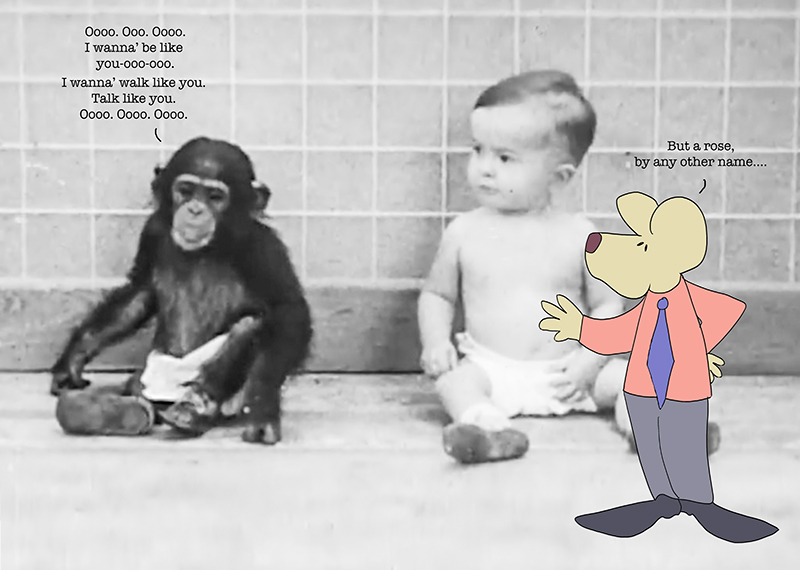We humans experiment. I would say that is true for most of us.
When I was a kid, I used to set up “laboratories” all the time in our basement, unbeknownst to my parents. I would mix together all sorts of things I found down there, acting like I was saving the world with my new discoveries.
It is lucky I didn’t kill myself by fumes or explosions. I went on to have an interest in chemistry later in life, and I still like to learn about, to this day.
But experiments come in all forms, shapes, and sizes. We experiment when it comes to our relationships. We try to figure out what works with certain friendships, relationships and what doesn’t work in others.
The same is true in the kitchen. How many times have we tried a new ingredient in an old recipe, or put mayonnaise on a favorite sandwich when we normally use mustard? As I’ve said so many times before here, and as life says to us every day, “Change abounds.” And experimenting with new ways, things, ideas, people — is all a part of that change.
But sometimes, experiments go to an entirely different level. Consider the experiment that took place in 1931.
Winthrop Niles Kellogg (a comparative psychologist) and his wife, Mrs. Kellogg, I suppose, welcomed home a new arrival. It was not a baby, at least not a human infant. Their new family member was a baby chimpanzee.
The Kelloggs planned on raising the chimp, whose name was Gua, alongside their own baby boy, Donald. The whole big idea was to see how environment influenced development. They wanted to know if a chimp could grow up to behave like a human. Or to see if it would get to the point where it thought it was a human.
Back when Winthrop Niles Kellogg was a student, he became fascinated by “wild children” — those children who would be found abandoned, who were raised with no human contact. They’d often be reared in nature or the unknown. Like the little Tarzan kid, everyone talks about.
At any rate, Kellogg couldn’t very well abandon any kids into the wild to study them. It would be disreputable to do such a thing. So instead, Kellogg thought he would conduct an experiment in reverse. He’d bring an infant chimpanzee into his home, raising it as a human.
They never mention his wife’s name in the article, but she had to be some kind of a saint. Or perhaps, she was a scientist, such as he. Either way, she had to be all in, because for the next nine months, for 12 hours a day and seven days a week, Kellogg and his wife conducted tireless tests on Donald and Gua.
For as much as they could, I suppose, they raised the two babies in exactly the same way. Dressed them alike, fed them the same. All of it exactly. They conducted an incredible list of experiments too, that included this long and boring list: “blood pressure, memory, body size, scribbling, reflexes, depth perception, vocalization, locomotion, reactions to tickling, strength, manual dexterity, problem-solving, fears, equilibrium, play behavior, climbing, obedience, grasping, language comprehension, attention span, and others” (The Psychological Record).
And. Get this. For a while, Gua actually excelled at these tests compared to Donald.
Then, this. Eventually, Gua hit a cognitive wall. It seemed that no amount of training or nurturing she received would ever overcome the fact that, genetically, she was a chimpanzee.
The Psychological Record concluded the experiment “probably succeeded better than any study before its time in demonstrating the limitations heredity placed on an organism regardless of environmental opportunities as well as the developmental gains that could be made in enriched environments.”
But it had to end. The whole thing, after nine months, stopped abruptly and mysteriously. Maybe the chimp was getting too strong, or perhaps it posed some sort of threat. They never revealed what happened.
And then there was this. Gua showed no signs of learning human languages. But, her brother Donald had begun imitating Gua’s chimp noises instead. They may have feared for Donald’s language development.
So there it is. We humans experiment, as we are products of both our heredity and environment.
And it’s all bananas if you ask me.
==========
“The best way to show that a stick is crooked is not to argue about it or to spend time denouncing it, but to lay a straight stick alongside it”
― D.L. Moody
==========
“See now the power of truth; the same experiment which at first glance seemed to show one thing, when more carefully examined, assures us of the contrary.”
― Galileo Galilei
===========
“America is the most grandiose experiment the world has seen, but, I am afraid, it is not going to be a success.”
― Sigmund Freud
===========
